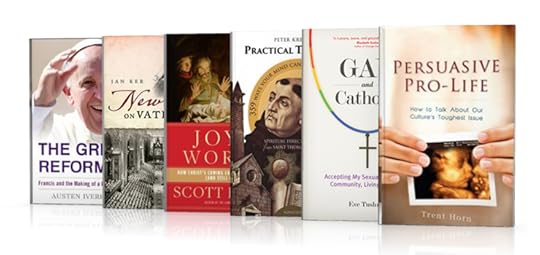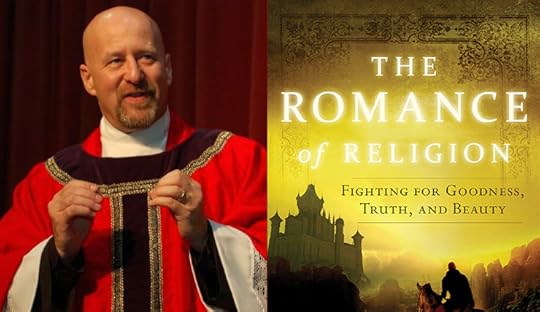Brandon Vogt's Blog, page 25
September 11, 2014
6 New and Notable Books I’m Excited About (September 2014)
One perk of being a book reviewer is that publishers regularly send emails, catalogs, and a steady stream of advanced review copies.
I try to review as many as I can, but I can’t get to them all. So each month I highlight a few new and upcoming books that I’m particularly excited about.
(The descriptions below are either from the publisher or from Amazon.)
Persuasive Pro Life: How to Talk about Our Culture’s Toughest Issue
by Trent Horn
Catholic Answers Press, 334 pages, paperback
Released on September 11, 2014
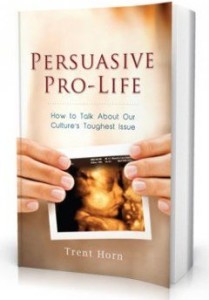 Are you scared to talk about abortion? Don’t worry—almost everyone is. Either we think the subject is too impolite, or we don’t want to be branded an intolerant fanatic, or we’re afraid we won’t represent the pro-life side well enough. Whatever the reason for this fear, it causes many of us pass up opportunities to speak out on behalf of the unborn.
Are you scared to talk about abortion? Don’t worry—almost everyone is. Either we think the subject is too impolite, or we don’t want to be branded an intolerant fanatic, or we’re afraid we won’t represent the pro-life side well enough. Whatever the reason for this fear, it causes many of us pass up opportunities to speak out on behalf of the unborn.
You can overcome this fear, says Trent Horn in his new book Persuasive Pro-Life. With a little knowledge and a few proven techniques, you can become a bold and effective apologist for life.
Drawing on over a decade as a pro-life organizer, Horn helps you cut through the diversions and obfuscations of the “pro-choice” side in order to accurately frame the legal, historical, and medical issue surrounding abortion. Then he demonstrates—with vivid personal examples from his years of campus activism—the importance of being charitable in all abortion debates, no matter how strident the other side might be. We must be not just warriors for the pro-life cause, he says, but ambassadors for it.
Then Horn leads you a guided tour of the many types of pro-abortion opponent or inquirer (“the pragmatist,” “the skeptic,” “the conflicted”) along with more real-life examples. In each case he teaches you specific approaches—what to say, what not to say, and how to bear yourself—that are custom-tailored to every situation.
The struggle over abortion has never been hotter, and the stakes could not be higher.
Read Persuasive Pro-Life today and never again be afraid to speak up for the precious and fundamental right to life.
Gay and Catholic: Accepting My Sexuality, Finding Community, Living My Faith
by Eve Tushnet
Ave Maria Press, 224 pages, paperback
Released on October 20, 2014
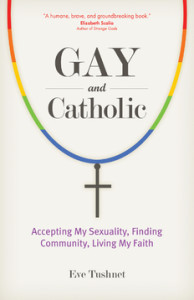 In this first book from an openly lesbian and celibate Catholic, widely published writer and blogger Eve Tushnet recounts her spiritual and intellectual journey from liberal atheism to faithful Catholicism and shows how gay Catholics can love and be loved while adhering to Church teaching.
In this first book from an openly lesbian and celibate Catholic, widely published writer and blogger Eve Tushnet recounts her spiritual and intellectual journey from liberal atheism to faithful Catholicism and shows how gay Catholics can love and be loved while adhering to Church teaching.
Eve Tushnet was among the unlikeliest of converts. The only child of two atheist academics, Tushnet was a typical Yale undergraduate until the day she went out to poke fun at a gathering of philosophical debaters, who happened also to be Catholic. Instead of enjoying mocking what she termed the “zoo animals,” she found herself engaged in intellectual conversation with them and, in a move that surprised even her, she soon converted to Catholicism. Already self-identifying as a lesbian, Tushnet searched for a third way in the seeming two-option system available to gay Catholics: reject Church teaching on homosexuality or reject the truth of your sexuality.
Gay and Catholic is the fruit of Tushnet’s searching: what she learned in studying Christian history and theology and her articulation of how gay Catholics can pour their love and need for connection into friendships, community, service, and artistic creation.
Practical Theology: Spiritual Direction from St. Thomas Aquinas
by Peter Kreeft
Ignatius Press, 376 pages, paperback
Released on October 21, 2014
 From a lifetime of studying the writings of St. Thomas Aquinas, popular author Peter Kreeft says that his amazement has continually increased not only at Aquinas’ theoretical, philosophical brilliance and sanity, but also at his personal, practical wisdom, his “existential bite.” Yet this second dimension of St. Thomas has usually been eclipsed by the other. Kreeft wrote this book to help bring that sun out from its eclipse. He provides easily digestible samples of the religious wisdom of Aquinas.
From a lifetime of studying the writings of St. Thomas Aquinas, popular author Peter Kreeft says that his amazement has continually increased not only at Aquinas’ theoretical, philosophical brilliance and sanity, but also at his personal, practical wisdom, his “existential bite.” Yet this second dimension of St. Thomas has usually been eclipsed by the other. Kreeft wrote this book to help bring that sun out from its eclipse. He provides easily digestible samples of the religious wisdom of Aquinas.
Here are 359 pieces of wisdom from St. Thomas’s masterpiece, the Summa Theologiae , which Kreeft says “are literally more valuable than all the kingdoms of this world because they will help you to attain ‘the one thing needful,’ or ‘the greatest good’ “, the ultimate end and purpose and meaning of life. Three of its names are “being a saint,” “beatitude” (“supreme happiness”) and “union with God.” That was the principle for Kreeft in choosing which passages to use: do they help you to attain your ultimate end – sanctity, happiness, union with God? St. Thomas would have agreed with writer Leon Bloy, who often wrote that in the end “there is only one tragedy in life: not to have been a saint”.
These 359 gold nuggets have helped Kreeft in the struggles of real life, to live in the real world, to grow closer to the Lord, and he hopes they will do the same for his readers. After each passage directly from Aquinas, Kreeft provides brief spiritual commentary to help explain it and apply it – practical, personal, existential, “livable” thoughts.
He has framed these readings as answers to questions that people actually ask their spiritual directors. Each answer is taken word for word from Aquinas.
Joy to the World: How Christ’s Coming Changed Everything (and Still Does)
by Scott Hahn
Image, 192 pages, hardcover
Released on October 21, 2014
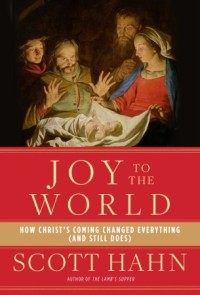 What could be more familiar than the Christmas story — and yet what could be more extraordinary? The cast of characters is strange and exotic: shepherds and magicians, an emperor and a despot, angels, and a baby who is Almighty God. The strangeness calls for an explanation, and this book provides it by examining the characters and the story in light of the biblical and historical context.
What could be more familiar than the Christmas story — and yet what could be more extraordinary? The cast of characters is strange and exotic: shepherds and magicians, an emperor and a despot, angels, and a baby who is Almighty God. The strangeness calls for an explanation, and this book provides it by examining the characters and the story in light of the biblical and historical context.
Bestselling author Scott Hahn who has written extensively on Scripture and the early Church, brings evidence to light, dispelling some of the mystery of the story. Yet Christmas is made familiar all over again by showing it to be a family story. Christmas, as it appears in the New Testament, is the story of a father, a mother, and a child — their relationships, their interactions, their principles, their individual lives, and their common life. To see the life of this “earthly trinity” is to gaze into heaven.
Newman on Vatican II
by Ian Ker
Oxford University Press, 192 pages, paperback
Released on October 28, 2014
 John Henry Newman is often described as “the Father of the Second Vatican Council.” He anticipated most of the Council’s major documents, as well as being an inspiration to the theologians who were behind them. His writings offer an illuminating commentary both on the teachings of the Council and the way these have been implemented and interpreted in the post-conciliar period. This book is the first sustained attempt to consider what Newman’s reaction to Vatican II would have been. As a theologian who on his own admission fought throughout his life against theological liberalism, yet who pioneered many of the themes of the Council in his own day, Newman is best described as a conservative radical who cannot be classed simply as either a conservative or liberal Catholic. At the time of the First Vatican Council, Newman adumbrated in his private letters a mini-theology of Councils, which casts much light on Vatican II and its aftermath.
John Henry Newman is often described as “the Father of the Second Vatican Council.” He anticipated most of the Council’s major documents, as well as being an inspiration to the theologians who were behind them. His writings offer an illuminating commentary both on the teachings of the Council and the way these have been implemented and interpreted in the post-conciliar period. This book is the first sustained attempt to consider what Newman’s reaction to Vatican II would have been. As a theologian who on his own admission fought throughout his life against theological liberalism, yet who pioneered many of the themes of the Council in his own day, Newman is best described as a conservative radical who cannot be classed simply as either a conservative or liberal Catholic. At the time of the First Vatican Council, Newman adumbrated in his private letters a mini-theology of Councils, which casts much light on Vatican II and its aftermath.
The Great Reformer: Francis and the Making of a Radical Pope
by Austen Ivereigh
Henry Holt and Co., 464 pages, hardcover
Released on November 25, 2014
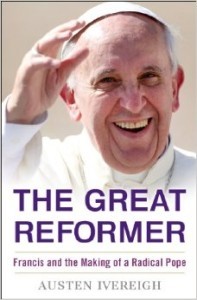 A biography of Pope Francis that will describe how this revolutionary thinker will use the power of his position to challenge and redirect one of the world’s most formidable religions
A biography of Pope Francis that will describe how this revolutionary thinker will use the power of his position to challenge and redirect one of the world’s most formidable religions
An expansive and deeply contextual work, at its heart The Great Reformer is about the intersection of faith and politics–the tension between the pope’s innovative vision for the Church and the obstacles he faces in an institution still strongly defined by its conservative past. Based on extensive interviews in Argentina and years of study of the Catholic Church, Ivereigh tells the story not only of Jorge Mario Bergoglio, the remarkable man whose background and total commitment to the discernment of God’s will transformed him into Pope Francis–but the story of why the Catholic Church chose him as their leader.
With the Francis Revolution just beginning, this biography will provide never-before-explained context on how one man’s ambitious program began–and how it will likely end–through an investigation of Francis’s youth growing up in Buenos Aires and the dramatic events during the Perón era that shaped his beliefs; his ongoing conflicts and disillusionment with the ensuing doctrines of an authoritarian and militaristic government in the 1970s; how his Jesuit training in Argentina and Chile gave him a unique understanding and advocacy for a “Church of the Poor”; and his rise from Cardinal to the papacy.
What new and notable books are you looking forward to?
The post 6 New and Notable Books I’m Excited About (September 2014) appeared first on Brandon Vogt.





September 5, 2014
“Christ 101″ Video Course Giveaway!
“Find out how much God has given you and from it take what you need; the remainder is needed by others.” – St. Augustine
Since I’ve built up a large collection of extra books and resources, every week I give some away absolutely free, no strings attached.
Each giveaway lasts seven days with a new one beginning every Friday. You can enter any time during the week. Check out my past giveaways here.
Thanks to Dr. Scott Sullivan, who I interviewed earlier this week, today I’m giving away one lifetime membership to his online “Christ 101″ video course.
“Christ 101″ Video Course
by Dr. Scott Sullivan
“Christ 101″ is the first complete, full-blown, semester long, multimedia course specifically made to address the problem of using reason and evidence to establish the truth of Christianity.
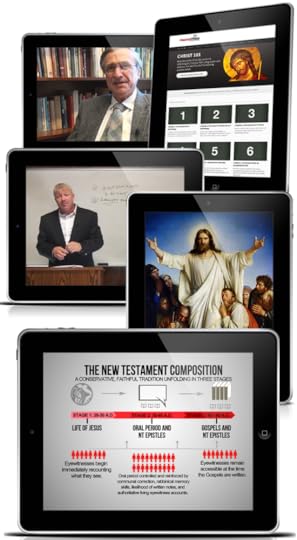 With over 3 years in production and containing contributions from 15 top scholars, “Christ 101″ is a massive program that consists of 28 lessons totaling up to nearly 14 hours of fun, engaging, and educational instruction.
With over 3 years in production and containing contributions from 15 top scholars, “Christ 101″ is a massive program that consists of 28 lessons totaling up to nearly 14 hours of fun, engaging, and educational instruction.
Building on centuries of wisdom from the intellectual giants of the Christian tradition, this program is a wealth of information that will help forge you into a sharp, savvy, well-spoken and articulate defender of the Christian faith.
Think of this as a course in “mental jiu jitsu.” A course that teaches you how to neutralize the attacks from atheists, skeptics, and other unbelievers.
We have gathered the best information we could find from scores of books and articles written in defense of the Christian faith, organized it, shot it all on HD video, edited it with attractive graphics and animation, and compressed all of that information down into this twenty-eight lesson course for you. This really is a top notch, no holds barred, flat-out awesome course on how to defend the Christian Faith!
As a Christian, we think you’ll agree that in the last analysis, all that matters is that you and your loved ones do not depart from their faith. This life is short, but eternity is forever.
Faith is a treasure that is worth investing some time in and today that means learning how to intelligently discuss it with unbelievers.
Arm yourself with a first rate program in Christian apologetics and clear out all the mental roadblocks, falsehoods, misunderstandings, misinformation and confusion that prevent people from taking faith seriously.
I’m using Rafflecopter to help with the giveaway, which is cool because it allows you multiple entries for commenting, posting on Facebook, sharing on Twitter, etc. Click below to enter:
(If you’re reading this through email or RSS and don’t see the giveaway widget, click here.)
By entering this giveaway you agree to occasionally receive email updates from me—no spam, just updates about free books, cool links, and exciting news.
The winner(s) will be randomly selected next Friday and the books will be sent out, free of charge, shortly thereafter.
In the future I’ll be giving away more books and resources, sometimes multiple items per giveaway! So subscribe via feed reader or email to ensure you never miss your chance to win.
(Since I’m covering the shipping costs, only residents within the continental United States are eligible to win.)
The post “Christ 101″ Video Course Giveaway! appeared first on Brandon Vogt.





September 4, 2014
Body Wars: Inside Info about Fulton Sheen Controversy (w/ New York’s Response)

Yesterday, the Diocese of Peoria shocked the Catholic world when Bishop Daniel Jenky announced that the beatification of Venerable Fulton J. Sheen had been suspended indefinitely. After a miracle attributed to Sheen’s intercession was approved by a board of medical reviewers and theologians, most people expected his beatification to take place sometime next year (in fact, I predicted Pope Francis would do it himself during his America visit in September 2015 for the World Meeting of Families.)
But Bishop Jenky, “heartbroken” and writing with “immense sadness,” explained that, “After further discussion with Rome, it was decided that the Sheen Cause would now have to be relegated to the Congregation’s historic archive.”
Why the sudden change? It seems the Diocese of Peoria and the Archdiocese of New York remain at odds about Sheen’s body, which is currently buried in New York’s St. Patrick’s Cathedral:
“The Holy See expected that the remains of Venerable Sheen would be moved to Peoria where official inspection would be made and first class relics be taken. Subsequently, the Archdiocese of New York denied Bishop Jenky’s request to move the body to Peoria…
Countless supporters especially from the local church in Central Illinois have given their time, treasure and talent for this good work with the clear understanding that the body of Venerable Sheen would return to the Diocese. Bishop Jenky was personally assured on several occasions by the Archdiocese of New York that the transfer of the body would take place at the appropriate time. New York’s change of mind took place as the work on behalf of the Cause had reached a significant stage.”
The Catholic blogosphere resounded yesterday with shock, dismay, and confusion. Things just didn’t seem to make sense. Why would Cardinal Timothy Dolan of New York prefer keeping Sheen’s body there, even if it threatened his cause for beatification? Why would Bishop Jenky go public with this apparently ad intra dispute, scandalizing many Sheen fans and Cardinal Dolan supporters?
I reached out to a close friend of mine, who is intimately involved in the cause, to see if there was more to the story. On the condition of anonymity, he shared that according to his understanding, the Archdiocese of New York got their civil lawyers involved, and they refused to even let Sheen’s tomb be opened, as required by the Canonical process at this point. They said that all this talk of relics and remains is distasteful to Americans. (I’m guessing they have not seen the crowds venerating John Paul II, Mother Teresa, or the relics of the Little Flower.)
My friend doesn’t think Cardinal Dolan is involved in this decision directly, but probably following his advisers.
He also noted that once the lawyers expressed their unwillingness to open the tomb, Bishop Jenky contacted the Congregation for Saints to say that the cause was at a stopping point until the remains could be inspected. He asked for their help to get that done. But instead of offering help, they responded that they would be forced to archive the cause since it was at a stopping point, and that Peoria and New York would have to work it out among themselves.
All of that occurred over two months ago. My friend believes Bishop Jenky was trying to see if something could be worked out just to inspect the remains, but when New York continued to give an absolute no, he felt obligated to announce things publicly.
My friend also said he had personally seen letters from the Holy See saying the body should be in Peoria, and also letters from the Archbishops of New York agreeing to this. He also said that Sheen did not ask to be buried in St. Patrick’s Cathedral. Cardinal Cooke insisted on that. He believes Sheen asked to be buried with other priests in a cemetery in the Bronx. The great majority of his remaining family now is in favor of the body and tomb being located in Peoria.
After hearing all of that from my friend, I was pleased to read some uplifting news this morning from Catholic News Agency, who interviewed the Postulator of the cause, Dr. Andrea Ambrosi. Dr. Ambrosi said he “has been aware of the issue regarding the transfer of Archbishop Sheen’s remains, but does not believe that this will be a lasting impediment.” He expects “that the suspension of the cause will be temporary, since there are many people still committed to this cause and the Beatification of Archbishop Sheen.”
Finally, just a few minutes ago, Joseph Zwilling, the Director of Communications for the Archdiocese of New York, released the following statement on behalf of the archdiocese:
“The Archdiocese of New York joins Bishop Daniel Jenky of the Diocese of Peoria in his invitation to prayer that “God’s will be made manifest” concerning the cause for sainthood of Venerable Archbishop Fulton J. Sheen. People have approached us for some background and we hope this helps, following the announcement yesterday from the Diocese of the Peoria, that the cause had been suspended.
Archbishop Fulton J. Sheen expressly stated his desire that his remains be buried in New York, a request that was granted by Cardinal Terrence Cooke when he was laid to rest beside the Archbishops of New York in the crypt beneath the high altar of Saint Patrick’s Cathedral. To date, the only official instruction that the Archdiocese of New York has received from the Holy See regarding this matter was, from a decade ago, that his body not be moved to Peoria. To date, we have not received any further direction or request from the Congregation for the Causes of Saints. In addition, Archbishop Sheen’s closest surviving family members have also expressed their desire that their uncle’s wishes be respected and that his body remain in New York.
The Congregation for the Causes of Saints did recently ask the Archdiocese of New York and the Diocese of Peoria to enter into a dialogue to see if there was a way to continue progress in moving the cause forward. Discussions with Peoria centered on two areas: the possible exhumation and study of the body; and the possible collection of “first class relics” of Archbishop Sheen. Cardinal Timothy Dolan did express a hesitance in exhuming the body, unless the Congregation for the Causes of Saints directed that it be done, unless the process was approved by the family, that it be done modestly and reverently, and that the exhumation met the requirements of New York State law. He consulted with the family, who gave their approval if it would help advance the cause.
Regarding first-class relics, Cardinal Dolan does object to the dismemberment of the Archbishop’s body. However, if the body is exhumed, there is the strong likelihood that some relics would be present in the coffin, which could be reverently collected without disturbing the body, and then shared generously with the Diocese of Peoria. The family is at peace with this; and we will await directions from Rome.
Immense gratitude is due to the Diocese of Peoria and to Bishop Jenky for the leadership they have shown in advancing the cause of Archbishop Sheen to its current status. If, however, the decision of the Diocese of Peoria is final to suspend the cause for Venerable Archbishop Fulton J. Sheen, and assign it to the Congregation for the Causes of Saint’s historical archives, the Archdiocese of New York would welcome the opportunity to assume responsibility for the cause in an attempt to move it forward, if such were in accord with the Diocese of Peoria and the Congregation for the Causes of Saints, hoping Bishop Jenky’s excellent work would continue and his eloquent prayers answered.”
May we all pray this situation resolves quickly, so that one of the greatest evangelists of the twentieth century can be recognized, celebrated, and imitated for generations to come.
UPDATE:
Based on info from Thomas Reeves’ biography, America’s Bishop: The Life and Times of Fulton J. Sheen (Encounter Books, 2001), it seems Sheen did not want to buried in St. Patrick’s cathedral but in Calvary Cemetery in Queens. Cardinal Cooke is the one who had him buried in the cathedral:
“On December 4 [1979], Fulton made out his will. He asked that his funeral Mass be celebrated at St. Patrick’s Cathedral, and that he be buried in Calvary Cemetery, the official cemetery of the Archdiocese of New York.” (p. 358)
“Several family members stayed with the cardinal [Cooke] during these days [around December 10, 1979] Joseph Sheen Jr. later recalled sitting next to Cooke in the dining room, when the cardinal pointed to a painting of a bishop (no doubt Archbishop John Hughes) on the wall and said, “He built it,” meaning St. Patrick’s Cathedral, “and your uncle filled it, that’s why I want him buried under the altar.” (p. 361)
The Archdiocese of New York’s statement is therefore a bit misleading when it says:
“Archbishop Fulton J. Sheen expressly stated his desire that his remains be buried in New York, a request that was granted by Cardinal Terrence Cooke when he was laid to rest beside the Archbishops of New York in the crypt beneath the high altar of Saint Patrick’s Cathedral.”
It’s true Sheen requested to be buried in New York, but not in St. Patrick’s. That said, the Cardinal has the right to inter Sheen’s body where it will most help the Church, and it does seem St. Patrick’s may better serve that purpose.
The post Body Wars: Inside Info about Fulton Sheen Controversy (w/ New York’s Response) appeared first on Brandon Vogt.





Letters to an Atheist: Wrestling with Faith [Book]
[image error]

[image error]
Letters to an Atheist: Wrestling with Faith by Peter Kreeft (Rowman & Littlefield Publishers, 2014)
[image error]
[image error]
This collection of letters from Dr. Peter Kreeft to a fictional young atheist is sort of a reverse Screwtape Letters . In both cases, you only read one side of the conversation—Kreeft leaves out the atheist’s letters just as C.S. Lewis eschews Wormwood’s replies to Uncle Screwtape—but Kreeft’s letters inspire faith rather than challenge it.
When Kreeft first connects with the young man, the boy is struggling with doubts. Clearly well-versed in philosophy and science, the young skeptic parrots many slogans associated with modern atheism: religion is based on myth and wishful thinking, science has disproved God’s existence, you don’t need God to be good, etc. Kreeft responds to each objection with compassion and understanding, but also with a bit of challenge. He wants to lead the boy to truth through the boy’s own reasoning, and isn’t afraid to push against his assumptions.
In the end, Kreeft’s letters demonstrate how to hold charitable, fruitful dialogue with unbelievers. Kreeft covers all the famous arguments for God’s existence, including Aquinas’ Five Ways and the arguments from desire, morality, fine tuning, and Big Bang cosmology. But he does so with a refreshing friendliness. The letters lack the polemical and turgid prose seen in many books on atheism. Instead, his book is sharp, witty, and warm, and one of the first I’d recommend to anyone wrestling with faith.
The post Letters to an Atheist: Wrestling with Faith [Book] appeared first on Brandon Vogt.





Pope Francis LIVE on YouTube with Students from Five Continents
This morning, at 10:45am ET, Pope Francis hosted a Live Google Hangout on YouTube where he spoke with children from five continents.
(If you missed the live stream, just click above to view the archived video.)
This first-ever live video chat between youth and the Holy Father lasted about twenty minutes. It was hosted by Scholas Occurentes, a global network of schools and educational institutions launched by Pope Francis last year through the Pontifical Academy of Sciences.
According to their website, Scholas Occurentes is “an education entity…where technology, arts and sports are used to encourage social integration and the culture of encounter”.
While there was no set agenda for the live chat conversation, the Pope conversed casually, mostly in Spanish, with five young people, each representing a different continent.
The post Pope Francis LIVE on YouTube with Students from Five Continents appeared first on Brandon Vogt.





September 2, 2014
The Evidence for Christianity: An Interview with Scott Sullivan
Scott Sullivan knows a good fight when he sees one. He pursued a career in martial arts and became an international kickboxing competitor in the 90’s. He headlined fight cards in Las Vegas and Tokyo, and held U.S. Heavyweight titles in Shootboxing. Proudly, Scott also received his black belt in Brazilian Jiu Jitsu during his many years of training. He was living out his dream.
However, something was missing. After having completed a BA in History at the University of Southern Indiana, Scott began examining the “big questions” of life. This line of questioning led to a lot of research on topics like the existence of God and the quest for finding a “true religion.” It was also this research that eventually brought about his conversion to Catholicism.
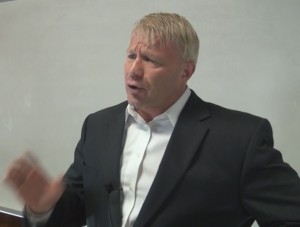 Scott taught many courses in philosophy and logic at various universities, but then decided he could reach a much wider audience by teaching through video.
Scott taught many courses in philosophy and logic at various universities, but then decided he could reach a much wider audience by teaching through video.
He also sensed there was a much larger fight than kickboxing that was threatening the world. It was secularism, the slow drift away from God and faith. That insight led him to create “Christ 101″, the first complete, semester long, multimedia course specifically made to address the problem of using reason and evidence to establish the truth of Christianity.
With over three years in production and containing contributions from 15 top scholars, “Christ 101″ is a massive program that consists of 28 lessons and nearly 14 hours of engaging video instruction.
Scott has gathered the best information he could find from scores of books and articles written in defense of the Christian faith, organized it, shot it all on HD video, edited it with attractive graphics and animation, and compressed all of that information down into this 28 lesson course for you.
Scott recently sat down with me to discuss apologetics, the Bible, Jesus’ Resurrection, and more.
He also graciously set up a special code for my readers. If you use the code BRANDON when checking out, you’ll save 50% off of the “Christ 101″ instant video course.
Watch the video trailer below to get a sense of the course:
BRANDON: You just released a fantastic online video course called “Christ 101: The Evidence For Christianity”. Tell us about the course and the expert contributors.
 SCOTT SULLIVAN: “Christ 101″ has been a dream of mine for quite some time. The reason why is because although I was raised as an evangelical Christian, I later fell away from the faith in high school. This falling away wasn’t merely due to moral temptations, but mostly because I had never been given any reason to think Christianity was true. I wasn’t an atheist, but I didn’t see any reason to think God had revealed himself in a particular way through Christ. So, I fell away from the faith primarily because I thought Jesus was a Santa Claus for grownups.
SCOTT SULLIVAN: “Christ 101″ has been a dream of mine for quite some time. The reason why is because although I was raised as an evangelical Christian, I later fell away from the faith in high school. This falling away wasn’t merely due to moral temptations, but mostly because I had never been given any reason to think Christianity was true. I wasn’t an atheist, but I didn’t see any reason to think God had revealed himself in a particular way through Christ. So, I fell away from the faith primarily because I thought Jesus was a Santa Claus for grownups.
It wasn’t until later, as an adult, that I discovered that there were actually good reasons for thinking Christianity is true and strong evidential grounds for making that act of Christian faith. After reading many books on this subject, I became both angered and motivated. I became angered because nobody had ever taught me this stuff before. I became motivated to do what I could to help others not to be shortchanged on their Christian formation. It was at that point that I decided to do a full blown course on Christian apologetics.
I then pursued a PhD in philosophy at the University of St. Thomas and while completing my dissertation there I concurrently worked on the “Christ 101″ course. It took me about three years to produce everything, and I wanted to make it both intellectually engaging and as entertaining as possible. I included a lot of content from other experts such as Peter Kreeft and Scott Hahn, and well-known New Testament scholars like Craig Evans (about whom Scott Hahn described as “one of the top New Testament scholars in North America”), Gary Habermas (a top authority on the resurrection of Jesus), and Michael Licona.
In a nutshell, “Christ 101″ is a full course in Christian apologetics and covers everything from the question of why religion is important, the nature of truth and faith, why the Gospels should be considered as historically reliable, and a defense of some of the traditional arguments for the divinity of Jesus.
BRANDON: Why should Catholics care about apologetics?
SCOTT: Catholics who neglect apologetics are not only shortchanging themselves out of the rich intellectual side of the Christian tradition, but they are also hampering any hopes of evangelizing others—especially more educated unbelievers.
Unbelievers have a right to good reasons for faith. By asking others to become Christian we are asking them to make sacrifices, and why should they do so if there aren’t even any good reasons for thinking Christianity is true? Why go to all of the trouble?
I would also say that for most people, their faith is weaker without apologetics. The will and intellect work together. It’s nice to make an act of the will to believe, but that act typically takes deeper root in a person who knows the reasons for his or her faith, especially in an increasingly skeptical and secular society like the west.
BRANDON: You begin your “Christ 101″ course on the Problem of Happiness. What’s the problem and why start there?
SCOTT: The Problem of Happiness is for atheists what the Problem of Evil is for theists: why is there so much happiness, joy, and beauty in the world? Would we expect that if the world just blindly and randomly evolved?
It’s easy to view religious discussion as an abstract matter without much practical application. I like the Problem of Happiness because it brings the issue down to a personal, experiential level.
BRANDON: Many critics of Christianity say we can’t trust the biblical documents as reliable, historical sources. Is this true?
 SCOTT: As I point out in the course, this criticism involves the fallacy of special pleading. That is to say these critics make unwarranted exceptions regarding the historicity of the New Testament that they would not make in any other area of ancient history. Starting with an extreme suspicion towards the historicity of the Gospels is simply unwarranted.
SCOTT: As I point out in the course, this criticism involves the fallacy of special pleading. That is to say these critics make unwarranted exceptions regarding the historicity of the New Testament that they would not make in any other area of ancient history. Starting with an extreme suspicion towards the historicity of the Gospels is simply unwarranted.
This error is sometimes coupled with another error, namely the claim that David Hume’s argument against belief in miracles is a good one. This is not true. David Hume’s argument proves too much actually and misunderstands the nature of probability.
BRANDON: What evidence is there that Jesus actually rose from the dead?
SCOTT: You have to start with a set of basic facts that can be established as certainly as any other commonly-accepted facts about ancient history. When we do this we can come up with at least five such facts. Then we ask, what is the best explanation for these facts? Given that the naturalistic hypotheses of conspiracy or hallucination do not seem plausible, the resurrection hypothesis gains in credibility. This inference can be strengthened with arguments in natural theology that show that God exists. As Richard Swinburne put it, if you are in the snowy mountains and you already know there is a gorilla on the loose, you need less evidence to show that a gorilla has acted in this particular location. If we have in fact established the existence of God through philosophical arguments, then the burden of evidence for a miracle occurring becomes lessened when we approach the Gospels with a theistic worldview already in hand.
BRANDON: You close the course by promoting “Pascal’s Wager.” What is this proposal and how can it lead people to God?
SCOTT: Well, there is a lot I can say about this because I’ve been studying this argument for a long time. Pascal’s Wager is the claim that in the absence of conclusive evidence either way for God’s existence, if one finds themselves not sure about the issue, then practical reason can step in and lead to belief in God based on self interest. Since speculative reason leaves us at a dead end in such a case, it is entirely rational to let practical reason decide.
In other words, it is immensely more reasonable to choose to believe in God rather than not because those who choose not to believe have an incredible amount to lose and little to gain for their unbelief. Thus, believing in God is much more reasonable on practical grounds.
Now Pascal’s Wager is one of the most underestimated arguments in the philosophy of religion. Critics who attack it with the “many God objection” are committing a straw man fallacy. When the Wager is used in conjunction with the standard apologetical arguments for the divinity of Jesus it becomes quite powerful on practical grounds. In other words, the standard apologetical arguments for Christ are what rules out other religious options such as Zeus or other crackpot gods like the Flying Spaghetti Monster. Christianity at that point is the only reasonable religious option. Thus the only live options at that point are Christianity and atheism – that’s where the wager kicks in. And it can lead people to God. People who are either not sure in the beginning, or who have already believed in God but are experiencing periodic doubts, are especially helped by the Wage.
Acting as if one believes in God—that is, sincerely doing so—can actually bring one to belief. Choosing to pray, going to Church, reading good apologetics books—all of these things are within our choice and can be reasonably chosen based upon self-interest and practical considerations. Faith can mature at that point. God’s grace can begin to work on a person who has been more opened up to the truth. The person can then find themselves at a point where they really do in fact believe in God.
Find out more about Scott Sullivan by visiting his website, ScottSullivan.com . And be sure to pick up your copy of the “Christ 101″ course.
(Don’t forget to use the code BRANDON at checkout to save 50% off of the “Christ 101″ instant video course!)
If you liked this discussion you’ll find several more on my Interviews page. Subscribe free via feed reader or email and ensure sure you don’t miss future interviews.
The post The Evidence for Christianity: An Interview with Scott Sullivan appeared first on Brandon Vogt.





August 29, 2014
“The Romance of Religion” Book Giveaway!
“Find out how much God has given you and from it take what you need; the remainder is needed by others.” – St. Augustine
Since I’ve built up a large collection of extra books and resources, every week I give some away absolutely free, no strings attached.
Each giveaway lasts seven days with a new one beginning every Friday. You can enter any time during the week. Check out my past giveaways here.
Thanks to the good folks at Thomas Nelson, I’m giving away TEN copies of Fr. Dwight Longenecker’s new book, The Romance of Religion:
(In case you missed it, read my interview with Fr. Dwight Longenecker about his book.)
The Romance of Religion: Fighting for Goodness, Truth, and Beauty
by Fr. Dwight Longenecker
Thomas Nelson, 240 pages, paperback
Released on February 4, 2014
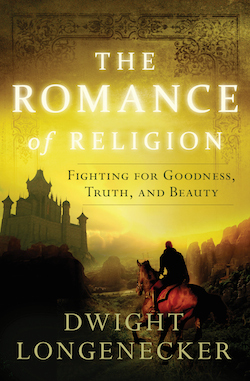 C. S. Lewis said that Christianity works on us like every other myth, except it is a myth that really happened. Dwight Longenecker grabs this idea and runs with it, showing that the Christian story is the greatest story ever told because it gathers up what is true in all the fantasy stories of the world and makes them as solid, true, and real as a tribe of dusty nomads in the desert or the death of a carpenter-king.
C. S. Lewis said that Christianity works on us like every other myth, except it is a myth that really happened. Dwight Longenecker grabs this idea and runs with it, showing that the Christian story is the greatest story ever told because it gathers up what is true in all the fantasy stories of the world and makes them as solid, true, and real as a tribe of dusty nomads in the desert or the death of a carpenter-king.
In The Romance of Religion Longenecker calls for the return of the romantic hero—the hero who knows his frailty and can fight the good fight with panache, humor, and courage. Conflict and romance are everywhere in the story of Christ, and our response is to dust off our armor, don our broad-brimmed hats, pick up our swords, and do battle for Christ with confidence, wonder, and joy.
Is religion no more than a fairy tale? No, it is more than a fairy tale—much more: it is all the fairy tales and fantastic stories come true here and now.
I’m using Rafflecopter to help with the giveaway, which is cool because it allows you multiple entries for commenting, posting on Facebook, sharing on Twitter, etc. Click below to enter:
(If you’re reading this through email or RSS and don’t see the giveaway widget, click here.)
By entering this giveaway you agree to occasionally receive email updates from me—no spam, just updates about free books, cool links, and exciting news.
The winner(s) will be randomly selected next Friday and the books will be sent out, free of charge, shortly thereafter.
In the future I’ll be giving away more books and resources, sometimes multiple items per giveaway! So subscribe via feed reader or email to ensure you never miss your chance to win.
(Since I’m covering the shipping costs, only residents within the continental United States are eligible to win.)
The post “The Romance of Religion” Book Giveaway! appeared first on Brandon Vogt.





August 28, 2014
My Son Isaiah, 5-Year-Old Priest (Video)
Many of you have seen the YouTube video of our son, Isaiah, celebrating Mass when he was three years old. It’s been watched over 80,000 times around the world, and I still receive emails from people telling me how much it moved them. (My wife and I joke that despite me being so involved with new media—and even writing a book on the topic—nothing I’ve produced has garnered the acclaim of our three-year-old son’s video. He’s the most viral Vogt.)
Two years later, Isaiah has grown into a gifted five-year-old, full of faith and devotion. He still loves the Mass, which he attends every morning, and he still breaks out his Mass kit every now and then. A few weeks ago he asked to play with it and we decided to capture the whole thing on video so that we could create a nice film. Watch it above, and be sure to stick around to the end to catch his outtakes!
PS. For another inspiring look at the priesthood, check out Fr. Robert Barron’s new short film, “Heroic Priesthood”.
The post My Son Isaiah, 5-Year-Old Priest (Video) appeared first on Brandon Vogt.





August 27, 2014
Learning from a Woman Leader in the 8th-Century Church
Today we continue our regular series called “Learning from the Saints.” Our guide is expert Bert Ghezzi, a dear friend of mine and the author of numerous books including Voices of the Saints, Saints at Heart, and Discover Christ: Developing a Personal Relationship with Jesus.
His more recent books are The Heart of Catholicism and Prayers to the Holy Spirit. You can learn more about Bert and his work at BertGhezzi.com.
Today, Bert profiles St. Leoba, an eighth-century missionary to Germany.
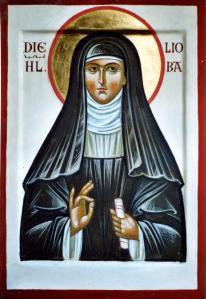 The last thing we might expect to find in the “Dark Ages” is an educated and holy woman who was a world-renowned leader in the Church. But such was Leoba, an Anglo-Saxon missionary, scholar, abbess, counselor to monks and bishops, confidant of kings and queens—and a saint.
The last thing we might expect to find in the “Dark Ages” is an educated and holy woman who was a world-renowned leader in the Church. But such was Leoba, an Anglo-Saxon missionary, scholar, abbess, counselor to monks and bishops, confidant of kings and queens—and a saint.
Aebba, Leoba’s mother, dreamt that her womb bore a church bell which, when delivered, chimed merrily. So when her daughter Thrutgeba was born, she dedicated the baby to serve Christ. She nicknamed the girl “Leoba,” which means “beloved.” At age 7, Leoba was sent to the monastery at Wimbourne, where two other outstanding women, Tetta and Eadburga taught her the liberal arts and Scripture.
Rudolf, Leoba’s biographer, reported that once she had a dream that revealed her vocation:
“She had a dream in which one night she saw a purple thread issuing from her mouth. It seemed to her that when she took hold of it with her hand and tried to draw it out there was no end to it. And as if it were coming from her very bowels, it extended little by little until it was of enormous length. When her hand was full of thread and it still issued from her mouth, she rolled it round and round and made a ball of it.”
An elderly nun at Wimbourne with a prophetic gift explained that the dream announced Leoba’s great work:
“By her teaching and good example she will confer benefits on many people. The thread coming from her mouth signifies the wise counsels that she will speak from the heart. The fact that it filled her hand means that she will carry out in her actions whatever she expresses in her words. Furthermore, the ball which she made by rolling it round and round signifies the mystery of the divine teaching. It is set in motion by the words and deeds of those who give instruction. And it turns earthwards through active works and heavenwards through contemplation, at one time swinging downwards through compassion for one’s neighbor, again swinging upwards through the love of God. By these signs God shows that she will profit many by her words and example, and the effect of them will be felt in other lands afar off wherever she will go.”
The dream came to be when St. Boniface, a cousin of Leoba, invited her to assist his church-planting work in Germany. He wanted Leoba to care for women in his communities. So around 733, Leoba left Wimbourne and Boniface made her the abbess at Bishofscheim, where she led hundreds of nuns.
At the monastery, Leoba trained many young women in both secular and Christian studies. She herself became an accomplished scholar of Scripture, the Fathers and canon law. St. Boniface arranged for her to be an adviser to the elders at Fulda, the main center of his work. And Charlemagne and Hiltigard, king and queen of the Franks, sought her advice.
Thus, for nearly four decades Leoba served the infant Catholic Church in Germany. She died at Bishofscheim in 779.
Dreams with divine messages startled both Leoba and her mother. God seems to have worked in their imaginations to orient them for his service. I doubt that these women were focused on their dreams, recording them dutifully and hoping to find their life’s direction in them. More likely, they kept their lives, minds and spiritual ears open to God, and he spoke to them. Their example is a good one for anyone, who hankers after guidance from God.
(Image Credit: Roldez)
Read more from Bert at his website www.BertGhezzi.com, or check out his many books on Amazon.
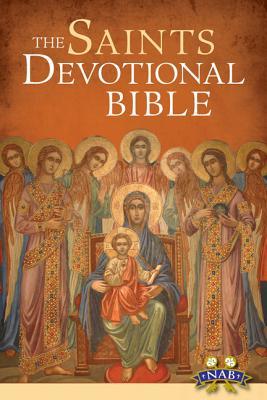
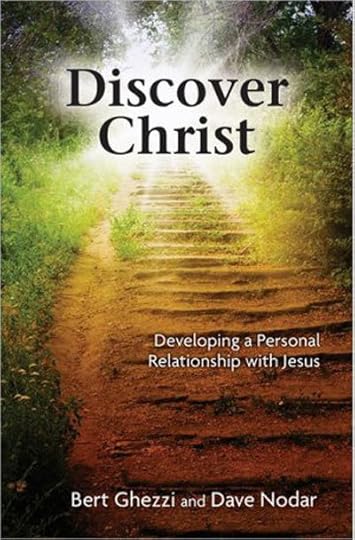
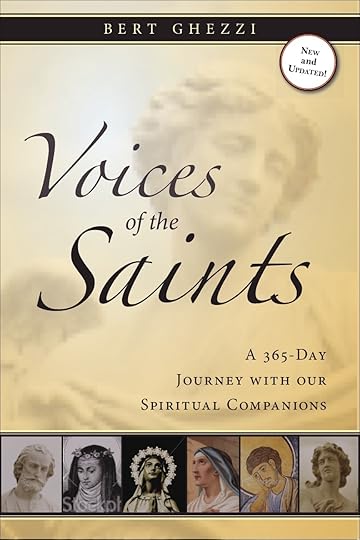
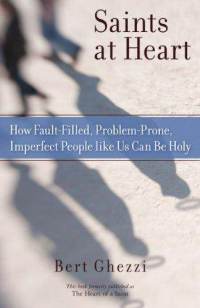
The post Learning from a Woman Leader in the 8th-Century Church appeared first on Brandon Vogt.





The Romance of Religion: An Interview with Fr. Dwight Longenecker
Romance and religion aren’t two words that most people normally associate, but Fr. Dwight Longenecker does. The witty and imaginative priest just released a new book titled, The Romance of Religion: Fighting for Goodness, Truth, and Beauty (Thomas Nelson).
Fr. Dwight recently sat down with me to discuss Jesus, adventure, myth and more.
BRANDON: You introduce your new book, The Romance of Religion, by saying Jesus’ table-turning episode was the key to your own life turning upside-down. How did this happen?
 FR. DWIGHT LONGENECKER: Someone has said “the gospel is only good news when it is subversive.” As religious people we often hear this and think that it involves some sort of political activism and the revolutionary spirit. However, the gospel is subversive in more ways than simply societal revolution. To revolt is to revolve, and revolution means not only turning over the tables, but turning over the established, comfortable way of the world. It means to stand on our heads and see the world in a new way. The gospel should always challenge our preconceptions, our prejudices, our bigotry, and bias.
FR. DWIGHT LONGENECKER: Someone has said “the gospel is only good news when it is subversive.” As religious people we often hear this and think that it involves some sort of political activism and the revolutionary spirit. However, the gospel is subversive in more ways than simply societal revolution. To revolt is to revolve, and revolution means not only turning over the tables, but turning over the established, comfortable way of the world. It means to stand on our heads and see the world in a new way. The gospel should always challenge our preconceptions, our prejudices, our bigotry, and bias.
The Romance of Religion takes this and runs with it. It calls for us to be spiritual conquistadors, chevaliers of the spirit, somewhat foolish Don Quixotes setting out to rescue the fair maiden of beauty, tilt at the giant windmills of hypocrisy and pride, and to be so good that we’re bad. In other words, we are agents of contradiction—living prophetic signs of trouble for those who are dozing in their worldliness.
BRANDON: In your new book, you repeatedly describe the Christian life as an adventure and as a romance, which may seem strange to many people. How do these adjectives fit?
FR. DWIGHT: I’m very interested in the storyline of the mythic hero. In Joseph Campbell’s “mono myth”—the one myth to rule them all—the hero is first seen in his ordinary world. Then he hears the call of adventure, refuses the call then sets out on a journey into the unknown to battle as yet unseen enemies and overcome the darkness. Within that classic story he fights for beauty in the form of the fair maiden, and attains some great treasure, which he brings back for the salvation of his people. This is the pattern not only of all the classic myths, and of great literature, but also of all the great sagas in the Old Testament, the pattern of the gospel, and the pattern of the lives of saints.
Staying at home is not an option.
BRANDON: You write, “The Catholic Church has many problems, but being respectable is no one of them.” What do you mean by that?
FR. DWIGHT: By “respectable” I mean respectable in the world’s eyes. One of the truths that helped me convert from Anglicanism to Catholicism was the fact that Anglicanism was the “established church”. Her bishops were appointed by the Prime Minister on behalf of the Queen. Her bishops had seats in the House of Lords. Anglicans were part of the respectable establishment, and it seemed to me that this was not what the church should be. Instead of being interwoven with the systems of power in the world, it should be “in the world, but not of the world”. It was to be respected, but not respectable.
The Catholics, on the other hand, were not established. In England, for hundreds of years they had been persecuted severely. This felt authentic to me. Then when I investigated the countries where Catholicism seemed to be the established church like France, Italy, and Spain, even there I discovered, as I read history, that the course of true love between the governments and the church in those countries never did run smooth. Revolutions and subterfuge were always simmering and for many reasons the Catholic Church—even when she was powerful in worldly terms—was at her best when she was challenging the system rather than supporting it.
BRANDON: Twentieth-century English writers like C.S. Lewis, J.R.R. Tolkien, and G.K. Chesterton wrote about doctrine with the romantic verve you reintroduce through this book, but we haven’t really seen that for the last hundred years. Why not?
FR. DWIGHT: I’m actually not sure I agree with you about that. Those of us who love Lewis, Tolkien, and Chesterton view their day with nostalgia, but we’ve got some great writers from the next generation here in the United States. Flannery O’Connor, Dorothy Day, Thomas Merton, and Walker Percy come to mind. Presently I think Dean Koontz and Michael O’Brien are making significant contributions, but it takes time for the classics to emerge. One of the problems with the contemporary scene is that startlingly good writers are hard to find because they take time to mature and to develop an audience.
I do agree, however that there is a certain lack of “bite” in many contemporary religious authors. Modernism has watered down the wine and tamed the lion. Consequently, many of those who do write from a standpoint of orthodoxy do so with an unattractive combative tone and accusatory emphasis. The spiritual warrior needs to be cheerful and confident. We need to wield the sword, but with a feather in our hat and a spring in our step. This is why I find the French hero Cyrano de Bergerac so attractive. He battles his foes while composing a poem and sacrifices all while quoting a sonnet.
BRANDON: You agree with C.S. Lewis that Christianity is the true myth, the consummation of all the great fairy tales and stories. How is this so?
FR. DWIGHT: I am convinced that all the great stories find factual fulfillment in the stories not only of the gospels, but of the whole of the Old Testament. I am intrigued to imagine that the Cinderella story, for example, (in which the poor, humble maiden married the Princely Lord and lives happily ever after) comes true in the stories of Isaac and Rachel, Ruth and Boaz, and ultimately in the Annunciation. The story of the rejected brother who turns out to the be the savior echoes in many major myths, in many cultures. There it is in the murder of Abel, the saga of Joseph, the rejection of Elijah, and then in the passion of Our Lord. The story of salvation from Genesis to Revelation is a fulfillment of all the great myths, legends, and tales told in many ways through many cultures but in the Old and New Testament they come true in the lives of real people in history.
The final lesson is if they came true in the history of the Jewish people, and in the history of the lives of the saints, then they may also come true in our own lives if we live by faith.
Critics of Christianity might protest, “But it is all a fairy tale!” I would reply, “Of course it is a fairy tale! Through our religion we don’t just tell a fairy tale, we live the fairy tale. In Christ we can go on the heroic journey. We can find true love’s kiss. We can find the great treasure of eternal life hidden in the field. We can be the hero who saves others, fights for the fair Maiden Mary, battles with the dragon of lust, greed, and death and goes on to win the victory. Just as the fairy tales, myths, and legends “became flesh and dwelt among us” in Christ, so they come true in our own lives if we are willing to embark on that great adventure.
Follow Fr. Dwight’s writing at his blog, Standing On My Head and be sure to pick up his great new book, The Romance of Religion .
If you liked this discussion you’ll find several more on my Interviews page. Subscribe free via feed reader or email and ensure sure you don’t miss future interviews.
The post The Romance of Religion: An Interview with Fr. Dwight Longenecker appeared first on Brandon Vogt.





Brandon Vogt's Blog
- Brandon Vogt's profile
- 75 followers


